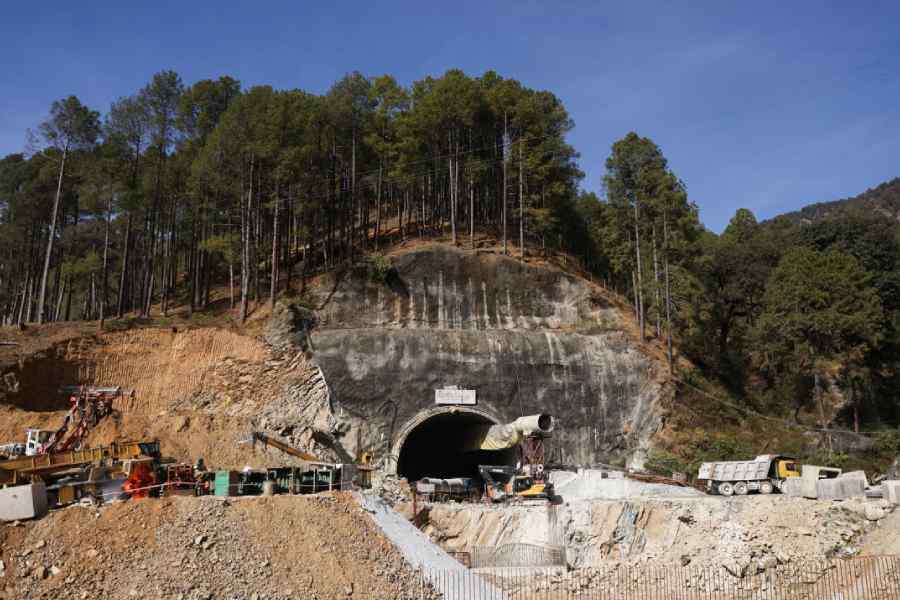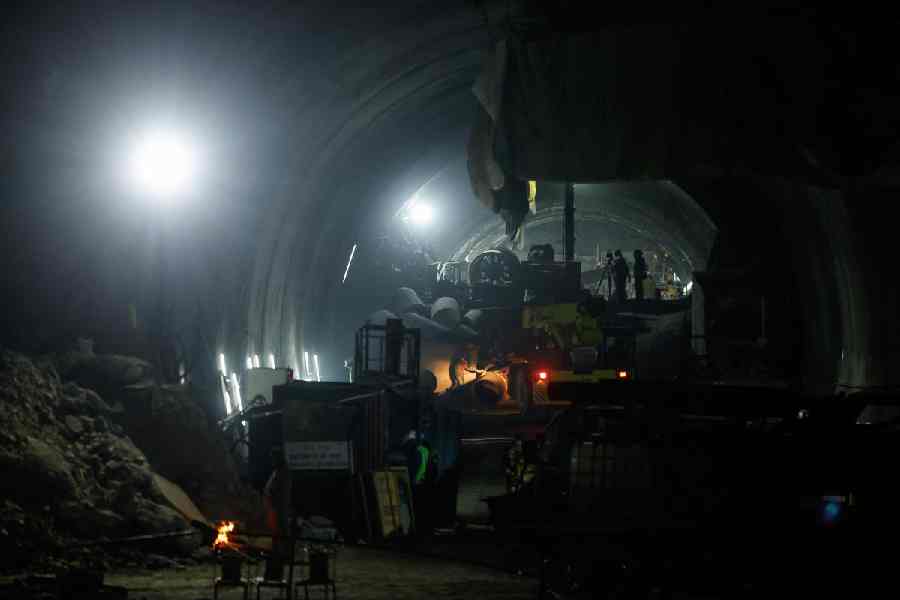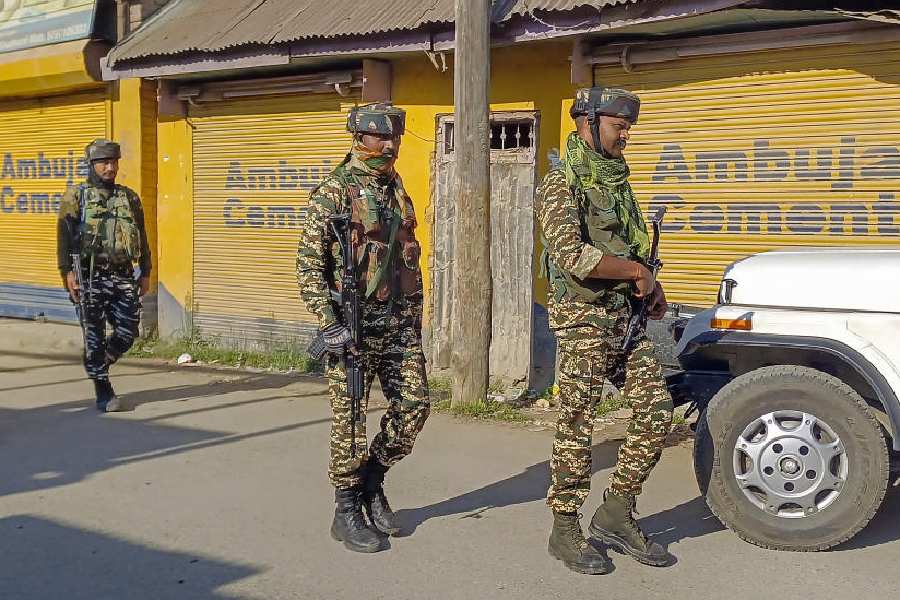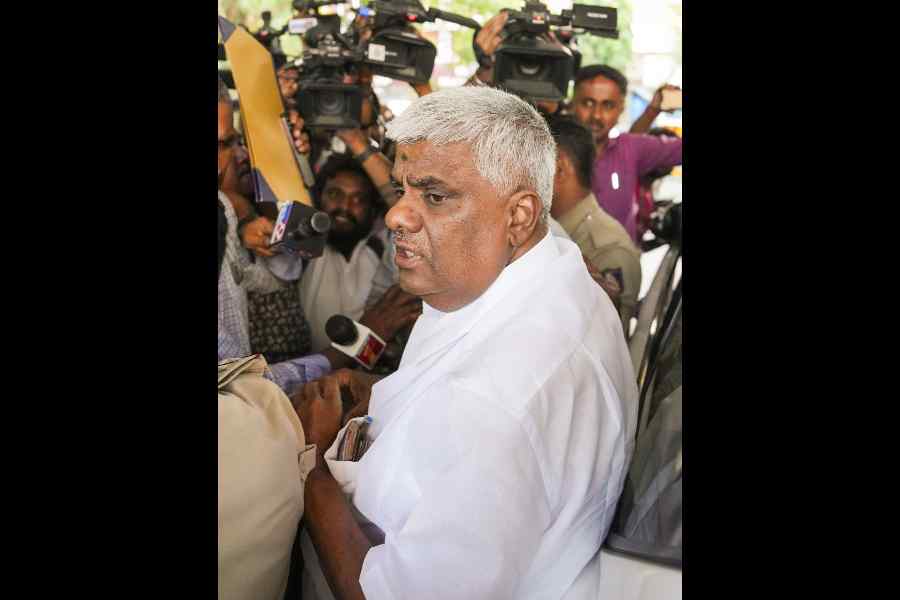The events leading to the Uttarkashi tunnel collapse remain unclear for now, but some experts have decried what they have called “myopic” and “unscientific” development activities that disregarded the Himalayan landscape’s fragility and carrying capacity.
Civil construction projects along the Himalayas in recent years have prioritised “economic gains and socio-political considerations” without adequate focus on, or investments in, protective measures guided by science, two geologists said on Saturday.
“We have erred in allowing the haphazard expansion of townships by housing and road building on unsuitable sites, ignoring the essentials of geological conditions,” geologists Naresh Pant and H.S. Saini said in a commentary in Current Science, a journal published by the Indian Academy of Sciences.
“We have also failed to enforce the standards of civil construction vis-à-vis land capability and hazards,” they said in their review, written months before the November 12 collapse of a 57m stretch of the tunnel along the Char Dham highway-widening project. “The market forces of excessive tourism (have) prevailed over safety norms.”
The project, launched in 2016 to widen 889km of roads to provide round-the-year connectivity to four pilgrimage sites — Yamunotri, Gangotri, Kedarnath and Badrinath — has evoked intense criticism from some scientists and environmental groups for the way it was implemented.
A high-powered committee (HPC) set up by the Union environment ministry under the Supreme Court’s directions to find ways to minimise its environmental and other consequences had found that the project had “damaged the Himalayan ecosystem due to unscientific and unplanned execution”.
The HPC, in a report submitted in July 2020, had also warned that the project had cut hills without prior slope vulnerability analysis and without adequate slope protection measures, increasing the risk of landslides.
A landslide susceptibility study by scientists from IIT Roorkee and the University of Potsdam, Germany, along the 250km highway from Rishikesh to Joshimath near Badrinath during September and October 2022 had noted 309 landslides along a 247km segment, or one landslide every kilometre.
“Nobody is suggesting that roads and other projects shouldn’t be taken up in the Himalayas,” Pant, a former professor of geology at the University of Delhi, told The Telegraph. “But projects need to take into account geological and landscape constraints and invest to ensure safety and minimise risk.”
Pant and other geologists have underlined that several large projects in the Himalayas — the Bhakra dam over the Sutlej in Himachal Pradesh and the Tehri dam over the Bhagirathi, for instance — have operated for years to decades without trouble.
“Ambitious projects in challenging landscapes can be achieved — but they need to be executed with respect for the local geology and the local terrain’s carrying capacity,” Pant said. “Those old projects gave due consideration to geology and this needs to be replicated in all current projects.”
However, current civil construction activities have, instead, been “myopic”, allowing people and townships to occupy flood-prone areas and vulnerable mountain slopes and building roads on poor-quality rock without protective care and due diligence in road alignment, Pant and Saini said in their commentary.
“The Char Dham road-widening project was part of the government’s inclination at grandstanding,” said C.P. Rajendran, a geologist and adjunct professor at the National Institute of Advanced Studies, Bangalore. “And they’ve done this, ignoring what science demanded.”
Geologists say they consider the Himalayas as fragile because they are a relatively young mountain range stretched along a seismically active zone. Many areas alongside the mountains are made up of loose, cohesion-less and unsorted sediments of low compressive strength.
Ashim Sattar, a glaciologist formerly at the Indian Institute of Science, Bangalore, who has analysed the potential hazards from landslides and avalanches along the Himalayas, said civil construction projects there demand not just environmental impact assessment but what he calls “multi-hazard assessment”.
“Projects in high mountains need to be analysed with respect to their potential exposure to landslides, avalanches and glacial lake outburst floods,” Sattar said.
But, as the HPC had flagged in its report, the government had split the 889km Char Dham road-widening project into 53 projects. All the segments were less than 100km, which allowed it to evade environmental impact assessments.











